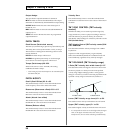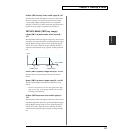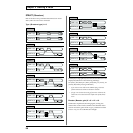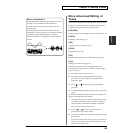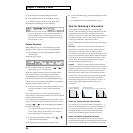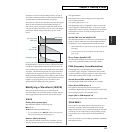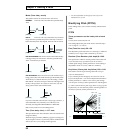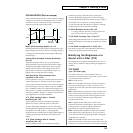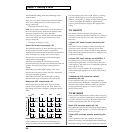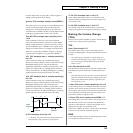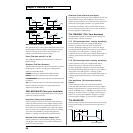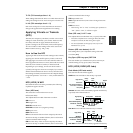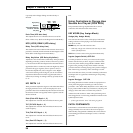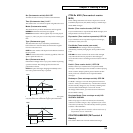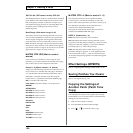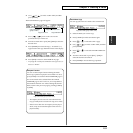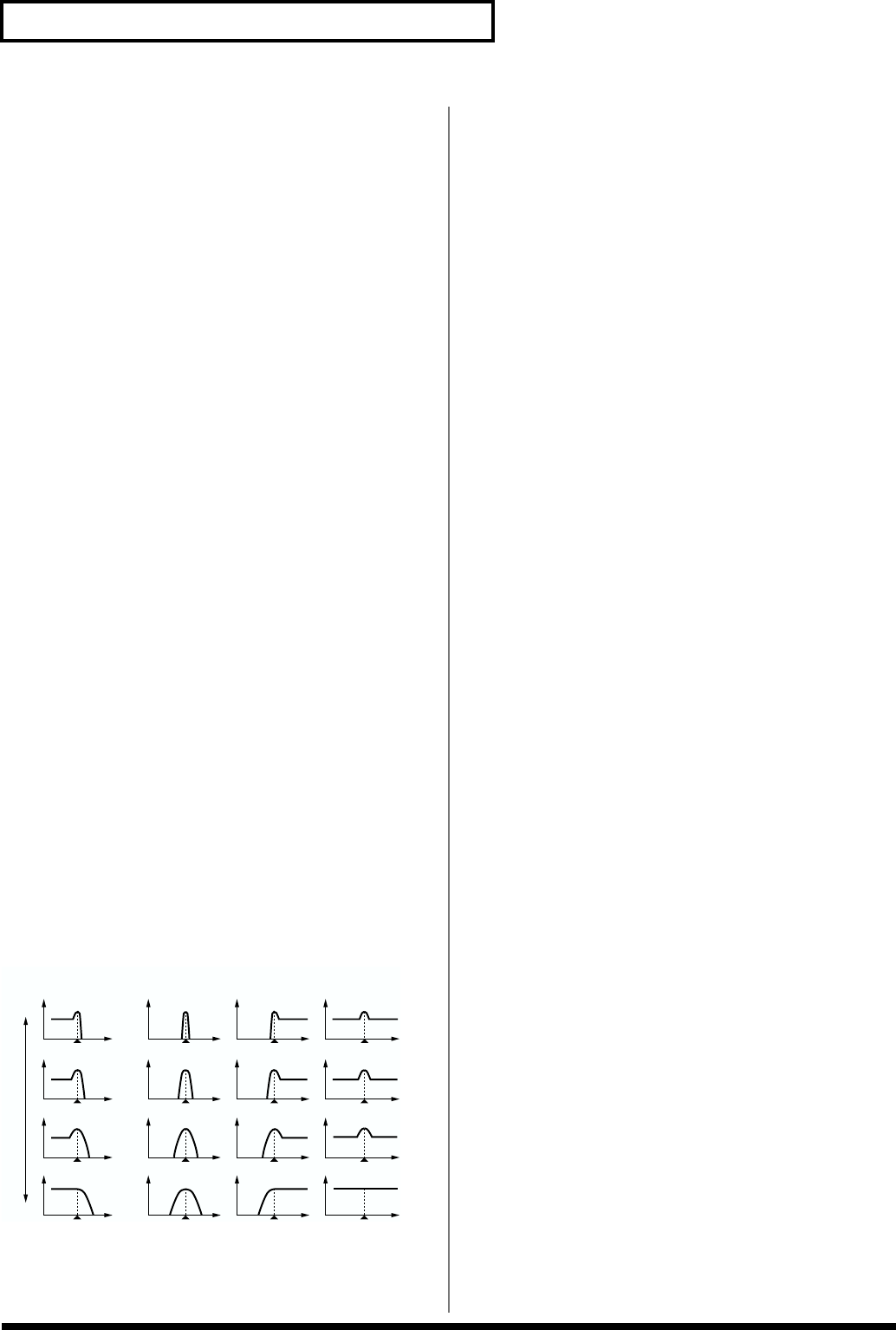
94
Chapter 4 Creating a Patch
TVF ENVELOPE settings while still maintaining a fixed
cutoff frequency.
This can be very effective with acoustic-instrument-based
Tones, since nothing is done to weaken the power and
energy of the sound.
* This disables the Resonance setting.
LPF3: Low Pass Filter 3 reduces the volume of frequencies
above the cutoff frequency. While similar to LPF2, it filter
reduces the frequencies more gently than LPF2.
This can be very effective with acoustic-instrument-based
Tones, since nothing is done to weaken the power and
energy of the sound.
* This disables the Resonance setting.
Cutoff (TVF cutoff frequency)0–127
This selects the frequency at which the filter begins to have
an effect on the waveform’s frequency components.
With LPF/LPF2/LPF3 selected for the Filter Type parameter,
lower cutoff frequency settings reduce a Tone’s upper
harmonics for a more rounded, warmer sound. Higher
settings make it sound brighter.
When Filter Type is BPF, the cutoff frequency setting
determines the range of frequencies within the Tone that will
be heard. This can be useful when creating distinctive
sounds.
When Filter Type is HPF, higher settings of the cutoff
frequency decrease the level of the Tone’s low frequencies,
preserving its brighter qualities.
When Filter Type is PKG, the cutoff frequency setting
determines the range of frequencies to be emphasized.
Resonance (TVF resonance)0–127
This increases the level of the cutoff frequency to add a
popular classic synth character to the sound. Excessively
high settings can produce oscillation, causing the sound to
distort.
fig.4-24.e
Keyfollow (TVF cutoff keyfollow)-200–+200
Use this parameter if you want the cutoff frequency to
change according to the key that is pressed. At Middle C
(C4), the original Cutoff value is used. Positive (+) settings
cause the cutoff frequency to rise for notes higher than
Middle C, and negative (-) settings cause the cutoff frequency
to fall for notes higher than Middle C. Higher settings
produce greater amounts of change to the original Cutoff
setting.
TVF VELOCITY
This sets the amount of change to the original cutoff
frequency produced in response to differences in velocity, as
well as the velocity response curve and velocity’s effect on
Resonance.
V-Cutoff (TVF Cutoff Velocity Sensitivity)-63–
+63
This sets the amount of change to the Cutoff setting to be
applied as a result of changes in playing velocity. With
higher settings, there is a greater amount of change between
softly and strongly played notes. Negative (-) settings reverse
the direction of change.
V-Curve (TVF cutoff velocity curve)FIXED/1–7
This selects one of seven curves that determine how
keyboard playing dynamics (velocity) influence the Tone’s
cutoff frequency. The selected curve is displayed graphically
to the right of its value.
When V-Curve is set to “FIXED,” the cutoff frequency
remains unchanged regardless of how hard or soft the keys
are played.
V-Resonance (TVF resonance velocity
sensitivity)-63–+63
Use this parameter when you want velocity to affect the
amount of Resonance. With higher settings, there is a greater
difference in the amount of Resonance between softly and
strongly played notes. Negative (-) values reverse the
direction of the change.
TVF ENVELOPE
These parameters determine the amount of filter enveloping
– changes to your original cutoff frequency setting that occur
over time – the effect of velocity on the TVF envelope, and
the basic characteristics of the TVF envelope itself.
Depth (TVF envelope depth)-63–+63
This adjusts the amount of filter enveloping. Higher settings
produce more change. Negative (-) values invert the effect of
the TVF envelope.
V-Sens (TVF envelope velocity sensitivity)-63–
+63
Use this parameter when you want keyboard playing
dynamics (velocity) to affect the depth of the TVF Envelope.
With higher settings, there is a greater difference in the TVF
LPF BPF HPF PKG
parameter value
Level
Cutoff frequency
Frequency
High
Low



